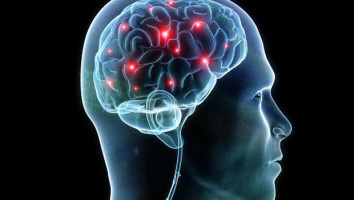
The brain tumour form glioblastoma is difficult to treat and has very poor prognosis.
In a new study, published today in the journal Cell Reports, scientists from Uppsala University show that a type of stem cell in the tumour is present in different states, with different response to drugs and radiation.
The results may open an avenue towards development of new treatment strategies designed to reverse therapy resistant cell states to more sensitive states.
Glioblastoma is a very aggressive tumour form and affected patients only survive for, on average, approximately a year after diagnosis.
Researchers believe that the difficulties in treating the disease is caused by cells in the tumours called glioma-initiating cells (GICs), a kind of stem cells that can start growing again, after treatment has been finished.
The new results from Uppsala University show that a single tumour contained GICs in different states that are differently resistant to therapy.
Cell states that were resistant to radiation were also resistant to drugs, and states that were resistant to one drugs tended to be resistant to most of the other tested drugs.
"Another interesting result was that the GICs did not fall into distinct response groups. Instead the difference in their response can best be described as a continuum of cells with different resistance levels. We also discovered a relationship between the resistance level and molecular characteristics of the tumour that are associated with disease prognosis. A resistant cell state of the GICs was linked to characteristics associated with poor prognosis and a sensitive cell state was linked to characteristics associated with better outcome", says Anna Segerman, who has led the study together with Bengt Westermark, Department of Immunology, Genetics and Pathology.
A new strategy to treat glioblastoma could be to target the intertumour heterogeneity, i.e. the presence in the same tumour of a mix of GICs that have different resistance levels and are linked to different prognoses.
"We hypothesise that the mix of GICs with different resistance levels is formed by a drift between the different cell states. With more knowledge about the mechanisms behind this it might be possible to develop new therapies that reprogram the GICs to render them more sensitive to radiation and drugs", says Bengt Westermark.
Source: Cell Reports